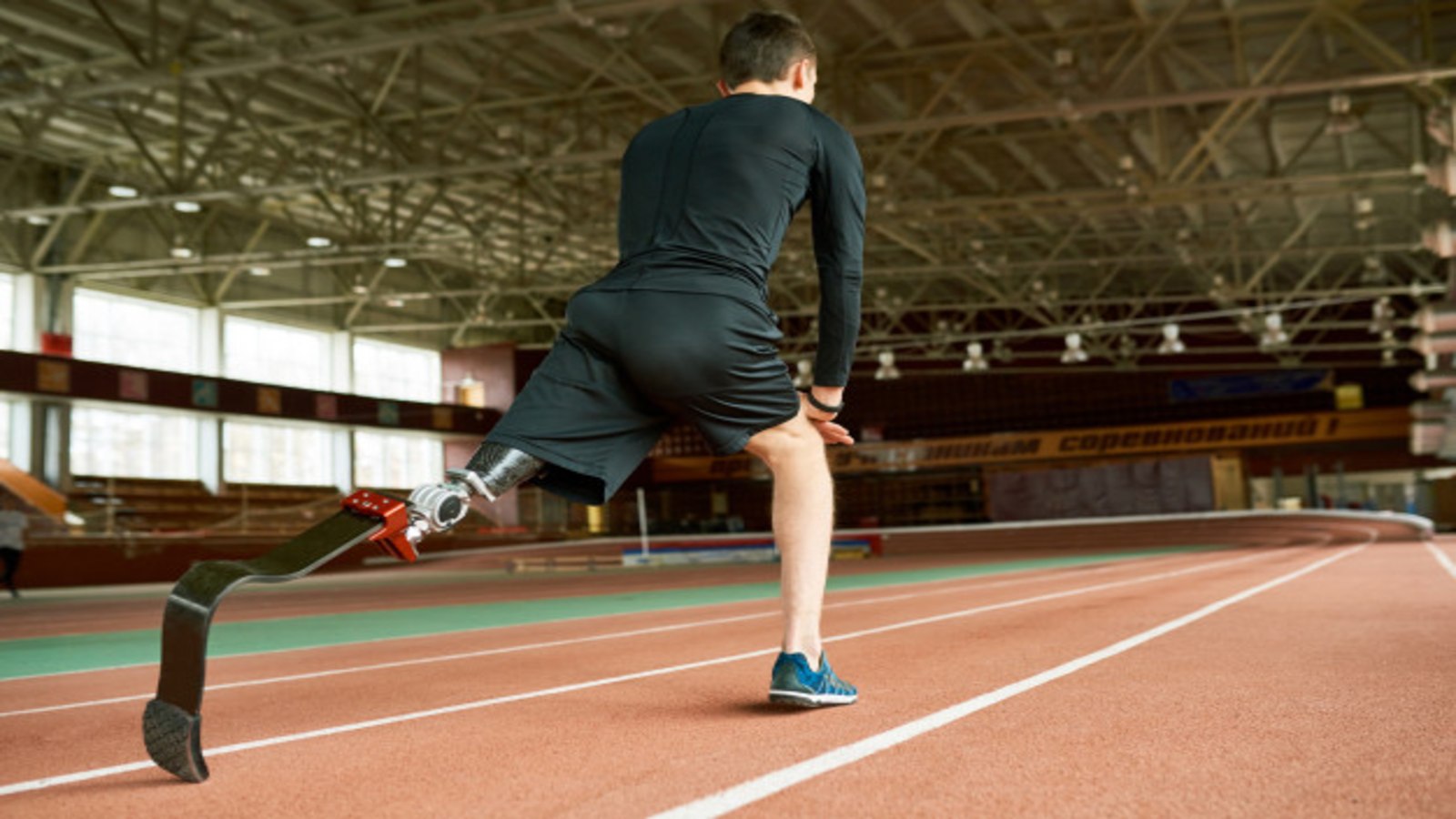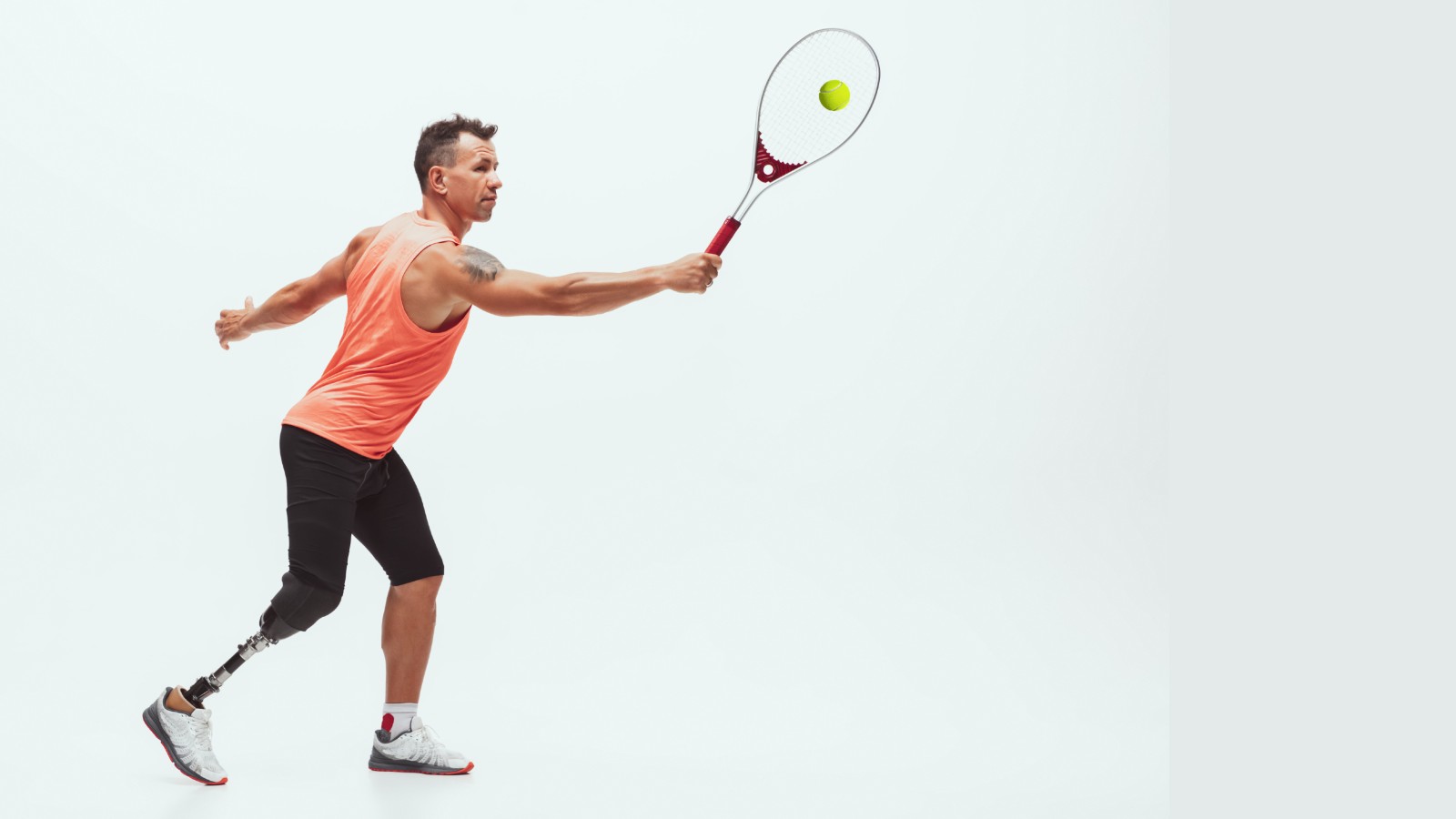Anything around 23 - 25%, of the 20% of the population who have a disability, participate in any form of sport and physical activity.

It is important to remember that people with a disability have the same social inclusion needs and own interests as all other participants. It is important that care is taken to provide them the opportunity to participate in sports and recreation activities that they will enjoy and that can be safely and appropriately catered for.
It will be necessary to research suitable resources, networks and strategies that help link people with a disability to recreation, fitness and sporting opportunities. This information will be used as part of the programme/activity planning process.
Resources for effective participation include;
-
Identifying client needs, desires and expectations, carefully matched to appropriate recreation opportunities that maximise participation.
-
Self-determination is an important concept that applies to people with a disability, and this means that they must be encouraged to have input and to make decisions regarding their own outcomes. For example choosing the activity based on what they say they can do and what they most want to get out of the experience.
-
Risk assessment of all environments that sports and activities are to be undertaken at, including facilities.
-
Assessment of available networks, support and funding.
-
Contracts and waivers.
-
Information booklets.
-
Rules, guidelines or requirements.
-
Timetables and schedules.
-
Equipment, including;
Non-slip mats.
Modified uniforms and gear.
Sports wheelchairs.
Modified sports equipment.
Lifting hoists.
Mobility equipment.
Other disability specific equipment.
It is essential to make sure that there are strategies in place for;
-
Training staff.
-
Effective communication. Consultation with participants and carers.
-
Promotion and encouragement strategies.
-
Safety and risk management. Consultation with carers, disability specialists, occupational health specialists.
-
Inclusion.
-
Outcomes enhancement.
-
Support network development and maintenance.
There are a number of networks that can be used and these include;
-
School programs.
-
Sports association programmes and networks.
-
Community services networks.
-
Health care networks.
-
Special disability networks.
People involved in disability support network, include;
- Advocates.
- Behavioural consultants (for acquired brain injury).
- Carers.
- Development officers.
- Disability support worker.
- Educational psychologists.
- Employment officers.
- Occupational therapists.
- Outreach worker.
- Programming staff.
- Teachers.
- Technicians.
There is a gap in participation rates of people with disability when compared to the general population. One of the main reasons is difficulty sourcing appropriate activities and trusted service providers. However, there are signs that the work of disability support groups, state sporting associations, clubs, fitness groups, recreation groups and local government is making a difference. There is evidence of, overwhelmingly, people with disability who play sport want to play more, and that those who are inactive want to get active.
These are;
- Person centered model - Organisers can work with people with disability and listen to their needs, co-design programs and work in partnership with people with disability, including when relevant their families, carers and wider support network. This approach has been recognised by many sporting associations as fundamental to success of inclusion programs.
- Break down stereotypes - Focusing on the abilities of people, based on what they tell you they can do. This means changing the perceptions of people with disability within and outside of your recreation or sporting community. Creating a culture in which more people understand that anyone with a disability is just as much a participant as an elite athlete.
- Active ageing - Data from the ABS (cat 4430.0, 2015) shows that the rates of disability increase with age. For example, while 1 in 5 people have a disability, closer to 2 in 5 people aged 65 and over have a disability. Therefore, if an organisation is also targeting older adults as new participants, there may be similarities in the approach to designing suitable activities for older adults and people with disability.
There are a range of recreation opportunities and activities that may be suitable for people with different types of disability.
-
AFL - For example, the NSW league runs 'AllPlay'. Click here.
-
Athletics - Includes track and field events that can be modified for inclusivity. Click here.
-
Basketball - Basketball is not only for players in wheelchairs. Programmes are available for all disability types. Click here.
-
Boccia - Boccia is an inclusive bowling game. Click here.
-
Cricket - This video introduces Australia's Deaf Cricket team competing at the 2018 Deaf Cricket World Cup in India.
-
Cycling - For example this organisation offers inclusive cycling tours. Click here.
-
Diving - There are groups that provide accessible diving. This international organisation has two providers in Australia. Click here.
-
Fishing - State and local governments provide reliable information. Click here.
-
Golf - For example, adapted golf. Click here.
-
Hobbie and leisure pursuits - e.g., music, art, crafts, special interest clubs. - For example, CPL facilitates creative recreational activities. Click here.
-
Hockey - This video introduces Australia's All Abilities Hockey program.
-
Horse riding - For example, RDAQ facilitates this service. Click here.
-
Lawn Bowls - For example Bowls VIC supports participants in all disability types. Click here.
-
Netball - For example NSW all abilities netball. Click here.
-
Sailing - For example the Sailability program catering for youth and adults with a disability.
-
Snow sports - Some organisations specialise in winter sports. Click here.
-
Soccer/Football - For more information on inclusive football in WA. Click here.
-
Soft ball - Softball Australia supports inclusive programmes. Click here.
-
Surfing - For example programs run by Disabled Surfers Association as explained in this video.
-
Swimming - For example, Swimming Queensland collaborates with others to offer Aquatic Participation Fun Days. Click here.
-
Tennis - For information on Tennis Australia and its inclusion programmes. Click here.
-
Ten pin bowling - Ten pin bowling is a popular activity. For information on clubs and tornaments, Click here.
-
Water skiing - For example this group specialises in inclusive water skiing. Click here.

People with disability can participate in all types of activities. Some activities are inclusive but others need modification. The types of modifications that need to be made are really key to determining the suitability of the particular activity.
The TREE method has been adapted from the Australian Sports Commission’s Disability Education program. Using this method ensures that the sporting or fitness environment will be adapted to suit the needs of the person with a disability through safe and well-considered modifications.
TREE stands for;
Modifications can be made to the teaching or coaching style.
- Maintain awareness of the varied abilities of the group.
- Always use language that is appropriate.
- Short and simple instructions are most inclusive.
- Ensure that your body position is within, as appropriate, the hearing or visual range of all participants.
- Provide physical assistance that is appropriate.
- Use buddy systems.
- Use visual aids.
- Perform demonstrations as a part of explanations.
Modifications can be made to the rules and regulations of games for inclusivity.
- Allow for more goal attempts of bounces in games that have restrictions.
- Make smaller teams to increase participation.
- Make larger teams reduce fatigue.
- All rolls and bounces for example in games like cricket.
- Modify scoring and field distances as required.
- Minimise or remove scoring altogether to remove competition if appropriate.
The environment of the activity can be modified in order to have better outcomes for participation.
- Reduction in the size of the playing area.
- Special zone implementation within the playing area.
- Reduce net, goals and hoop height or width.
- Play on a smooth surface such as a netball court.
- Limit any surplus equipment or distractions in the area.
Modifying the equipment or resources that are used to conduct the activity in order to make it more accessible and flexible for participants.
- Size.
- Weight.
- Length.
- Colour.
- Method of use.
- Altering or adding a mechanism.
- Bat or ball type.
- Contrasting colour for ease of seeing the item on the ground surface or in the air.
Examples of modified activities
- Walking football - It is low-impact, team-based exercise, utilising the defined ‘Walking Football Rules and Formats,’ specifically non-contact with the players ‘always having one foot on the ground’.
- 'Buddy' program - Some organisers offer ‘buddy’ options to encourage socialising and increase motivation. For example, a personal trainer running fitness classes for groups of adults with disabilities instead of training one on one.
- Wheel chair marathon - These marathons were created to allow those with the incapability to run a marathon gain that satisfaction of accomplishment through competition. The Marathon Wheelchair was designed for people with an impairment to compete in marathons or triathlons.
-
For some other great ideas of modified activities and team sports. Click here.
Examples of modified fitness classes
-
A spin class that incorporates both stationary bicycles and Krank machines (arm cycles, possibly with removable seats).
-
A yoga class that includes instruction on seated moves and other adaptations.
-
A running club that utilises fully accessible routes and volunteers to act as guide runners for those who are blind or have visual impairments.
-
A high-intensity cardio class that includes a seated participation option.
-
A group exercise and fitness program that incorporates seated exercises, accessible stations, and/or machines with removable seats.
-
An aquatic aerobics class that lessens or eliminates force impact, standing requirements, and potential body heat stress via an aquatic environment and optional flotation devices.
The following video demonstrates an instructor introducing, demonstrating and conducting warm up exercises with two participants who are both in wheelchairs.
The video below introduces a gym with fitness programs and equipment designed for people with disabilities with the support of Spinal Cord Injuries Australia.
Examples of modified equipment
- Wheel chair training rollers.
- Hand cycle / hand bike.
- Standing frame.
- Modified wheel chairs.
- Mobility aids.
- Gripping aids - Active hands and hooks.
- Postural supports.
- Positioning supports.
- Height adjusters.
- Visual activity instruction cards.
- Adaptive activewear - functional, fashionable workout clothing and footwear for people with disabilities.
REMEMBER;
- Maintain the integrity of the activity or task – Don’t change things so much that it is no longer the same task, skill, game or activity.
- Keep it challenging – don’t make it too easy for the participants and aim to remove adaptations over time as skill and understanding improves.
- Involve participants in decision making – this will get buy in from participants and ensure you meet their specific needs. It is essential that clear consultation and collaboration with appropriate professionals is undertaken in order to make sure that all activities and equipment remain suitable for the participants.
- Only make changes if you need to – don’t make changes for change sake, not all participant need adaptations to participate or achieve the tasks required.
- It may not be possible to include all people all of the time – safety is always the priority so try your best but use common sense.

